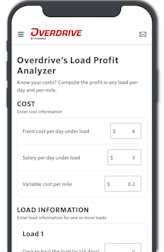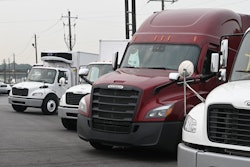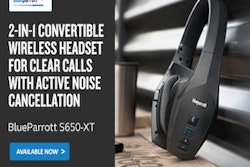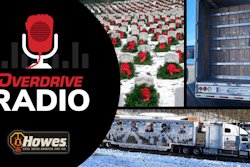
Chris Freeman understands all too well the steep price tag of diagnostic tools.
Now director of commercial vehicle diagnostic sales and training for Autel North America, he was once a tech himself, and ventured out on his own after starting out with a dealer.
Even 25 years ago, Freeman says it cost him around $20,000 to buy the software for the things he was certified in.
As trucks become safer and more efficient, they’ve also gotten more complicated, making diagnostic tools more expensive and more valuable on the shop floor, creating circumstances where shop owners looking to save a buck are more susceptible to tools that are too good to be true.
[RELATED: The right diagnostic tools in the right hands can add to your bottom line]
“Customers know if they are buying counterfeit,” says Bruno Gattamorta, chief commercial officer, Cojali USA, maker of Jaltest. “It’s not that someone tricks them into it. They actively pursue it due to price and/or availability.”
Other customers may purchase bad diagnostic tools unknowingly. Jason Hedman, product manager at Noregon, says some sites look reputable and shop owners think they’re getting a good deal.
“This is a major issue because it presents a variety of risks to the buyer, from loading potentially malware-infested software on their shop devices to wasting money on a product that doesn’t work as advertised — or at all,” Hedman says.

[RELATED: Insurance policies can help protect businesses from cybersecurity attacks]
Any savings on these products comes at a huge cost. These tools plug software into the truck and downloads the data and can upload data. Using a bootlegged copy of software or a device not purchased from an authorized dealer can open up the vehicle and the shop to liability.
What does counterfeit mean?
The aftermarket has long been plagued with counterfeit parts. Parts that purport to be one thing, but are really another, often with lesser quality to go along with a lower price tag. When it comes to diagnostic tools, this is not the same problem.
By and large, dealers and shops aren’t buying what they think is a name brand software; they’re actively seeking out lower-priced, often bootlegged software.
“They’ll take the software and duplicate it, and those people will sell it,” says Chris Freeman, director of commercial vehicle diagnostic sales and training for Autel North America. “What they have to do is sell it in a very cheap manner. [They] put it on a piece of hardware, usually a laptop, and sell it for $3,000.”
It may work initially, even well. But, eventually, the original software’s maker updates the product to account for new technologies or fix problems. The copied software won’t update and eventually stops working. The shop then needs to either go back to the original bootlegger for a new copy — at a cost, of course — or take the loss.
“There’s no such thing as a free lunch,” Freeman says. “Never, ever.”
Where do these tools come from?
Hedman says a lot of the counterfeit software and hardware comes from China, but resellers are all over the globe.
“Most of these guys are overseas,” Freeman says. “That’s how they get away with this stuff.”
He adds Autel doesn’t see a lot of counterfeit copies of its own stuff. Rather, they’ll see products for other markets sold as U.S. products. The problem is it’s a different protocol overseas. The J1939 connection for U.S. trucks can’t talk to the Euro6 connection and vice versa. U.S. shops will purchase a product meant for overseas markets, deeply discounted, and then it won’t work.
“This is what makes us look like bad guys,” Freeman says. The goal, he says, is to catch people before they can make a bad purchase,
“I’ve been where these people are,” he says. “I know from a field level what these people are experiencing on a day-to-day basis.”
What are the consequences of counterfeit?
Lost money and time isn’t the only consequence of buying bootlegged diagnostic tools.
“The presence of counterfeit tools can undermine trust, lead to inaccurate diagnostics and harm repair outcomes,” Gattamorta says. “In addition, these counterfeit tools often come with no warranty or support, placing end users at significant risk if something goes wrong.”
And there are even worse scenarios.
Bootlegged tools can expose a shop to malware or ransomware, cannot be updated or upgraded, and is liable to be remotely shut down, leaving a shop with no working software or means of getting a refund.
“As commercial vehicles become more connected — integrating telematics, remote diagnostics and [Internet of things] solutions — the attack surface for cyber threats grows,” Gattamorta says. “While we continue to educate customers, it’s possible counterfeit tool vendors will try to exploit newer markets and technologies. If customers want to have secure operations, and in the near future it also means trucks under your control, they will have to steer free from counterfeit.”
How can you tell it’s counterfeit?
There are times where a shop thinks they’re buying an authorized tool, but they’re not. Here’s how Gattamorta says software and hardware can be verified:
- Always buy from authorized dealers or directly from the manufacturer.
- Verify the serial number through customer support or online registration portals.
- Diagnostic tools can be updated through the manufacturer’s servers. If the tool isn’t updating, that’s a red flag.
- Tools sold at unusually low prices also are a warning.
- Genuine products come with branded packaging, user manuals and official support documentation.
“More often than not, the old adage, ‘If it’s too good to be true, it probably is,’ proves correct,” Hedman says. “Aftermarket diagnostic tools are incredibly powerful applications capable of working on a major range of vehicles and equipment types, so they carry a price tag that represents that. If someone finds a diagnostic tool for a significantly discounted rate, they’ve likely found a fraudulent copy.”
What can you do if you accidentally purchase an unauthorized tool?
The first step, Hedman says, is to contact your IT department. If the shop doesn’t have an IT department, immediately uninstall the software and perform virus or malware scans or, preferably, have a professional look at the device and the shop’s systems.
Gattamorta says Cojali hasn’t seen a counterfeit Jaltest tool, but has seen just about every OEM tool hacked in some form or fashion.
“The way we are built is so we are invulnerable,” he says. “There is a magic mix between security measures, hardware and updates that has been our secret sauce.”
Hedman says Noregon tries to work with shops who have fallen victim to bootlegged hardware and software.
“One of the worst calls we can receive is a customer experiencing software issues only for us to discover they bought fake or counterfeited tools,” he says. “Buyers have very little recourse after being duped given that compromised software obviously doesn’t come with support or warranties. Though these instances are rare, we try to work with customers on an individual basis to help them out if they’ve been tricked into purchasing a counterfeit tool.”








